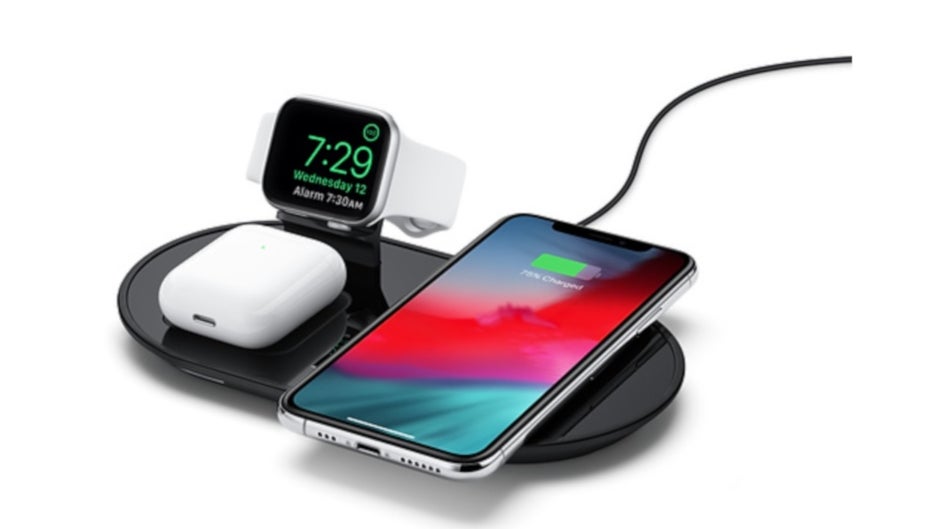Your phone's battery can have its life cut short thanks to wireless charging

For many consumers, the most important spec of a phone is its battery life. On some level, this makes plenty of sense. After all, it doesn't matter what the resolution is on your phone's display; without a charged up battery, that screen is not going to light up. Same with chipsets. It doesn't matter if your handset is powered by the Snapdragon 855 or the Snapdragon 439. A dead battery is the great equalizer.
While you can discover the capacity of the battery on your phone, one piece of data that isn't easily available is the number of charging cycles that a battery has. And if you take advantage of wireless charging on your phone, the life span of that component could be cut short. The reason why can be found in a new report issued by the American Chemical Society (ACS). The report (via iDrop News) notes that the inductive charging technology that is used on wireless charging pads creates several different sources of heat.
Misaligned wireless charging will generate the most heat and shorten the life of a battery faster
As the report points out, the life span of a battery can be shortened by heat. Or if we might quote the ACS, "It has been well-documented that increased calendar aging occurs in batteries as a function of storage temperature. Temperature can thus significantly influence the state-of-health (SoH) of batteries over their useful lifetime." In other words, heat can shorten the life of a smartphone battery. The higher the temperature, the shorter a battery's life span will be. A chart included in the ACS report indicates that for maximum battery life, the ambient temperature that a smartphone should be exposed to is between 15 degrees and 40 degrees Celsius (59 degrees and 104 degrees Fahrenheit). And enough heat can be generated by inductive charging to reduce the number of charging cycles that your smartphone battery will enjoy.

For maximum battery life, a smartphone should not be exposed to ambient temperatures outside of a range of 59 degrees to 104 degrees Fahrenheit
The researchers compared charging a handset using the usual wired method to a wireless charging pad with coils that were aligned with the ones in the phone, and a wireless charging pad that was not aligned with the phone on purpose. Using the typical wired charging process, the temperature did not exceed 27 degrees Celsius/80.6 degrees Fahrenheit. Aligned wireless charging reached a peak temperature of 30.5 degrees Celsius/86.9 degrees Fahrenheit, but started dropping off during the second half of the charging session. Misaligned wireless charging resulted in a similar peak temperature, but it was hit sooner than aligned inductive charging and held that peak temperature for 70 minutes longer.
So here are some suggestions that you can follow to increase the longevity of your phone's battery while still using the wireless charging feature on your phone. Do not charge it in the heat. That makes sense, of course, and similarly, you should not charge it while running any complex tasks that will tax the processor inside the phone and generate heat. Remove your phone's case before you charge to make sure that the device can cool down, and if possible, make sure the coils on the pad are aligned with those in the phone.
The report doesn't mention the heat generated by one of the most popular new features on high-end premium smartphones today; reverse wireless charging. This debuted last year on the Huawei Mate 20 Pro and is available on the Samsung Galaxy S10 and Galaxy Note 10 lines. Reverse wireless charging in effect allows you to use the back of your handset as a wireless charging pad to share some of the battery life remaining on your phone. This battery life can be shared with compatible devices such as wireless ear buds and other phones. Apple is reportedly adding this feature to the upcoming 2019 iPhones to be unveiled next month.
Follow us on Google News













Things that are NOT allowed:
To help keep our community safe and free from spam, we apply temporary limits to newly created accounts: